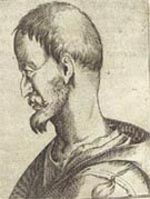|
Lucia Rodler
Delinquent Man between anthropology and literature
Uomo delinquente is an anthropological but also a literary work insofar as it employs rhetoric to communicate scientific ideas. From the first edition of 1876, Lombroso sought to convince the reader of the existence of the distinct psycho-physical characteristics of the normal man, the delinquent and the sick man, by way of inventio (a theory of atavism), of dispositio (the ordering of the materials which grew in successive editions), of elocutio (straightforward prose which proceeded through the accumulation of examples), of actio (founded on experimentation, since Lombrosian anthropology strove to influence medical, political and juridical experience) and finally of memoria (above all the physiognomic and phrenological tradition), which should also be taken in the sense of memorability (Lombroso became a classic in the Italian imaginary).
L’homme délinquant entre anthropologie et littérature
L’Homme délinquant est une œuvre anthropologique, mais aussi littéraire, au sens où elle utilise la rhétorique pour communiquer la science. Dès la première édition en 1876, Lombroso veut convaincre le lecteur de l’existence de caractères psychophysiques distincts pour l’homme nomal, le délinquent, le fou à travers une « inventio » (la théorie de l’atavisme), une « dispositio » (l’ordre du matériel disponible, qui s’accroît dans les éditions ultérieures), une « actio » (fondée sur l’expérience, l’anthropologie lombrosienne entend modeler l’expérience médicale, politique et juridique) et enfin la « memoria » (spécialement la tradition physiognomonique et phrénologique ») y compris dans le sens de la formation d’une mémoire collective (Lombroso devient un classique de l’imaginaire italien).
Go back to Physiognony from Lavater to the Great War |
|
|
|



